Cooked: Dmitri Babanov. INVESTIGATION SPACE TARGET PROJECT
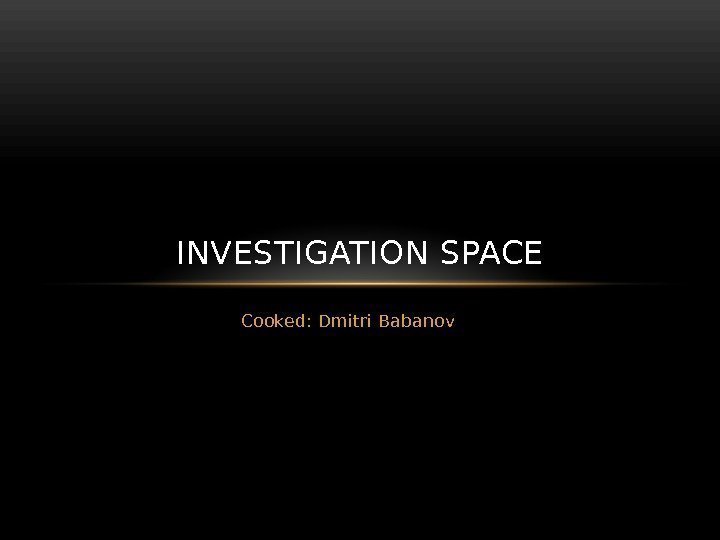
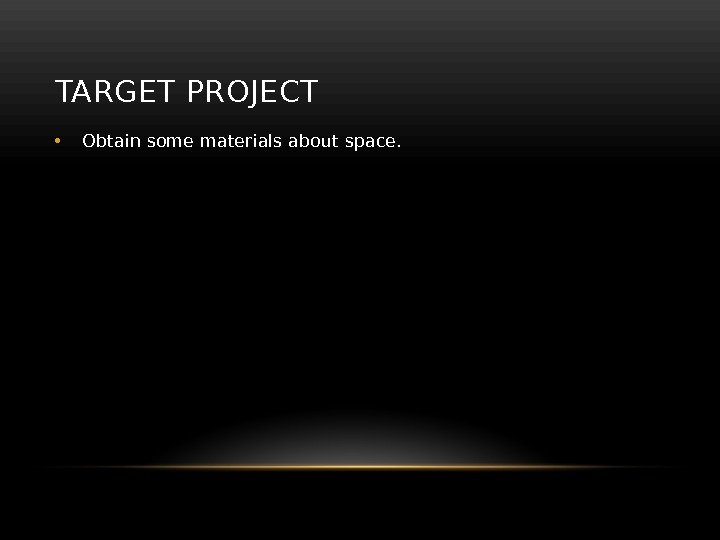
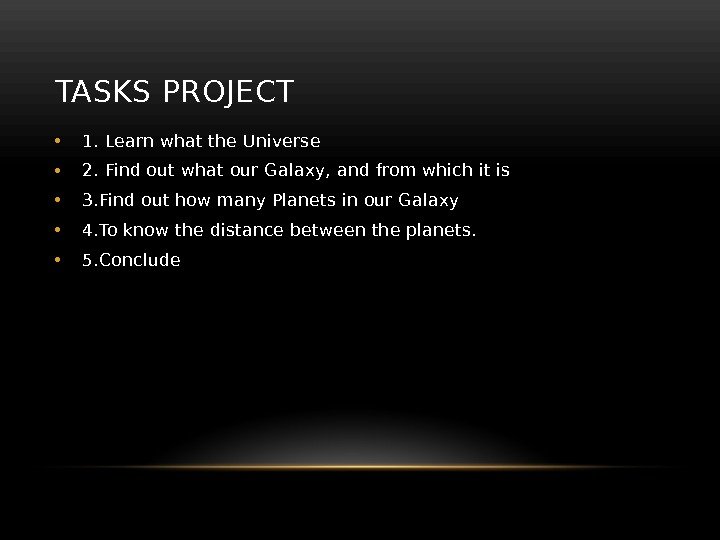
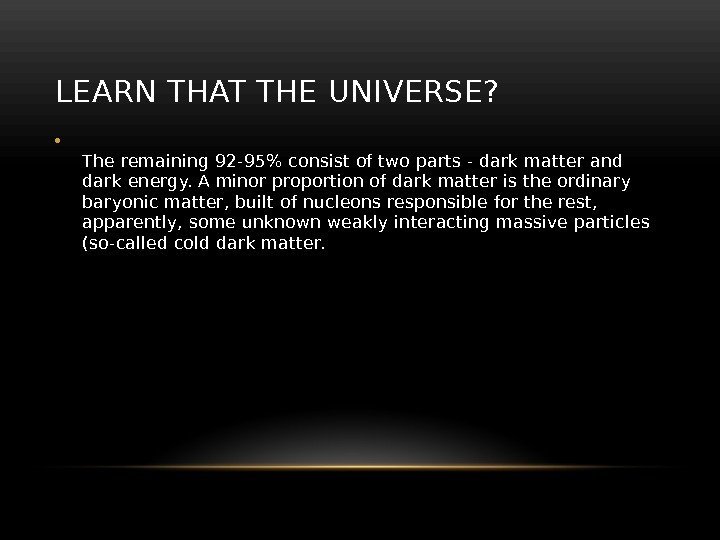
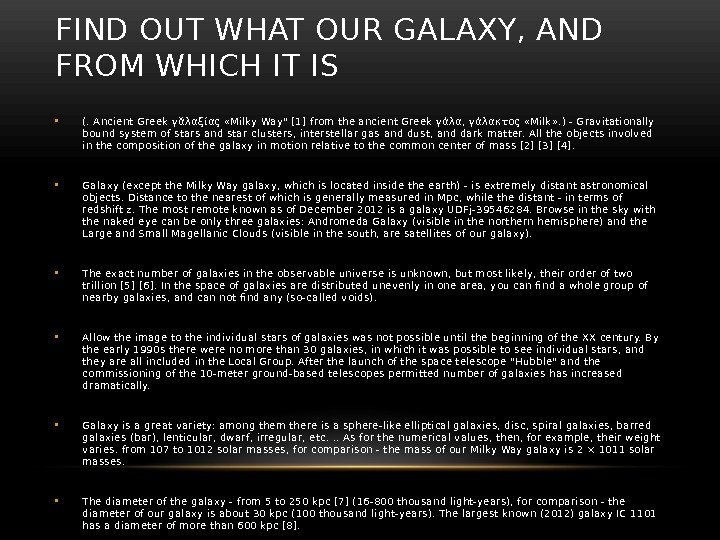
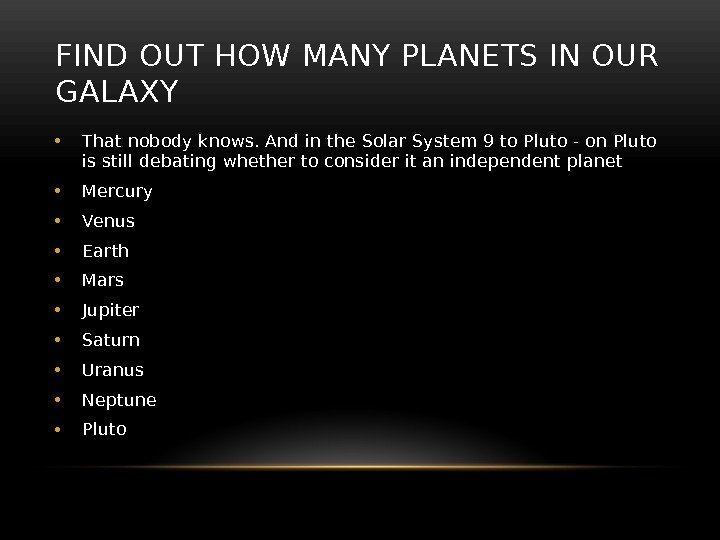
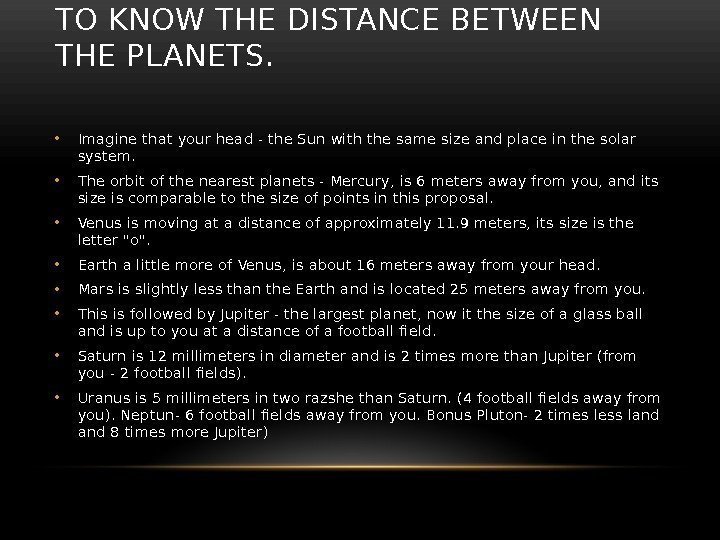
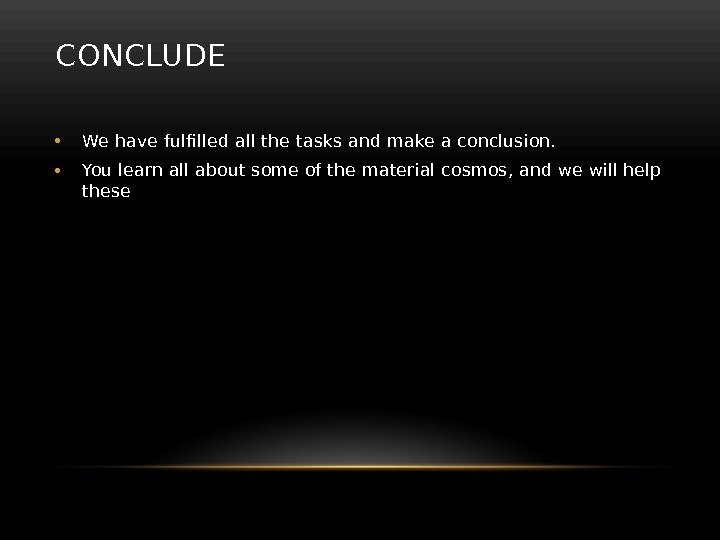
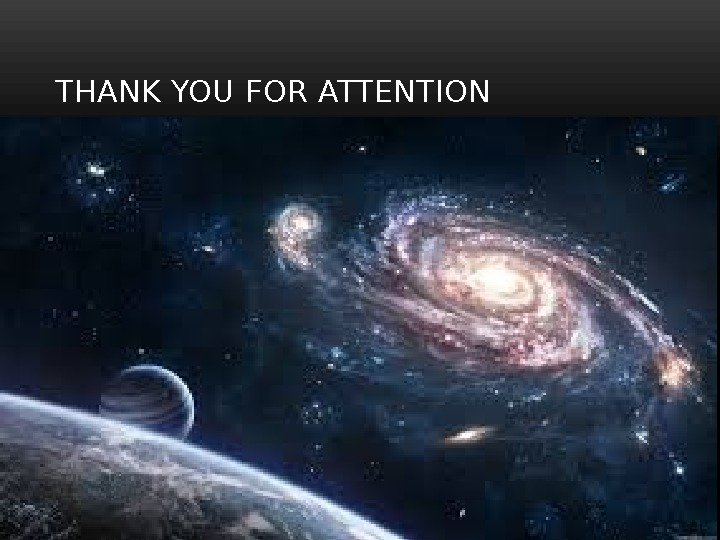
issledovanie_kosmosa.pptx
- Размер: 248.3 Кб
- Автор:
- Количество слайдов: 9
Описание презентации Cooked: Dmitri Babanov. INVESTIGATION SPACE TARGET PROJECT по слайдам
 Cooked: Dmitri Babanov. INVESTIGATION SP
Cooked: Dmitri Babanov. INVESTIGATION SP
 TARGET PROJECT • Obtain some materials about space.
TARGET PROJECT • Obtain some materials about space.
 TASKS PROJECT • 1. Learn what the Universe • 2. Find out what our Galaxy, and from which it is • 3. Find out how many Planets in our Galaxy • 4. To know the distance between the planets. • 5. Conclude
TASKS PROJECT • 1. Learn what the Universe • 2. Find out what our Galaxy, and from which it is • 3. Find out how many Planets in our Galaxy • 4. To know the distance between the planets. • 5. Conclude
 LEARN THAT THE UNIVERSE? • The remaining 92 -95% consist of two parts — dark matter and dark energy. A minor proportion of dark matter is the ordinary baryonic matter, built of nucleons responsible for the rest, apparently, some unknown weakly interacting massive particles (so-called cold dark matter.
LEARN THAT THE UNIVERSE? • The remaining 92 -95% consist of two parts — dark matter and dark energy. A minor proportion of dark matter is the ordinary baryonic matter, built of nucleons responsible for the rest, apparently, some unknown weakly interacting massive particles (so-called cold dark matter.
 FIND OUT WHAT OUR GALAXY, AND FROM WHICH IT IS • (. Ancient Greek γᾰλαξίας «Milky Way» [1] from the ancient Greek γάλα, γάλακτος «Milk» . ) — Gravitationally bound system of stars and star clusters, interstellar gas and dust, and dark matter. All the objects involved in the composition of the galaxy in motion relative to the common center of mass [2] [3] [4]. • Galaxy (except the Milky Way galaxy, which is located inside the earth) — is extremely distant astronomical objects. Distance to the nearest of which is generally measured in Mpc, while the distant — in terms of redshift z. The most remote known as of December 2012 is a galaxy UDFj-39546284. Browse in the sky with the naked eye can be only three galaxies: Andromeda Galaxy (visible in the northern hemisphere) and the Large and Small Magellanic Clouds (visible in the south, are satellites of our galaxy). • The exact number of galaxies in the observable universe is unknown, but most likely, their order of two trillion [5] [6]. In the space of galaxies are distributed unevenly in one area, you can fi nd a whole group of nearby galaxies, and can not fi nd any (so-called voids). • Allow the image to the indi vidual stars of galaxies was not possibl e until the beginning of the XX century. By the early 1990 s there were no more than 30 galaxies, in which it was possible to see individual stars, and they are all included in the Local Group. After the l aunch of the space telescope «Hubble» and the commissioning of the 10 -meter ground-based telescopes permitted number of galaxies has increased dramatically. • Galaxy is a great variety: among them there is a sphere-like elliptical galaxies, disc, spiral galaxies, barred galaxies (bar), lenticular, dwarf, irregular, etc. . . As for the numerical values, then, for example, their weight varies. from 107 to 1012 solar masses, for comparison — the mass of our Milky Way galaxy is 2 × 1011 solar masses. • The diameter of the galaxy — from 5 to 250 kpc [7] (16 -800 thousand light-years), for comparison — the diameter of our galaxy is about 30 kpc (100 thousand light-years). The largest known (2012) galaxy IC 1101 has a diameter of more than 600 kpc [8]. • One of the unsolved problems of the structure of galaxies is dark matter, manifesting itself only in the gravitational interaction. It can be up to 90% of the total mass of the galaxy, or may be completely absent, as in some dwarf galaxies [9]
FIND OUT WHAT OUR GALAXY, AND FROM WHICH IT IS • (. Ancient Greek γᾰλαξίας «Milky Way» [1] from the ancient Greek γάλα, γάλακτος «Milk» . ) — Gravitationally bound system of stars and star clusters, interstellar gas and dust, and dark matter. All the objects involved in the composition of the galaxy in motion relative to the common center of mass [2] [3] [4]. • Galaxy (except the Milky Way galaxy, which is located inside the earth) — is extremely distant astronomical objects. Distance to the nearest of which is generally measured in Mpc, while the distant — in terms of redshift z. The most remote known as of December 2012 is a galaxy UDFj-39546284. Browse in the sky with the naked eye can be only three galaxies: Andromeda Galaxy (visible in the northern hemisphere) and the Large and Small Magellanic Clouds (visible in the south, are satellites of our galaxy). • The exact number of galaxies in the observable universe is unknown, but most likely, their order of two trillion [5] [6]. In the space of galaxies are distributed unevenly in one area, you can fi nd a whole group of nearby galaxies, and can not fi nd any (so-called voids). • Allow the image to the indi vidual stars of galaxies was not possibl e until the beginning of the XX century. By the early 1990 s there were no more than 30 galaxies, in which it was possible to see individual stars, and they are all included in the Local Group. After the l aunch of the space telescope «Hubble» and the commissioning of the 10 -meter ground-based telescopes permitted number of galaxies has increased dramatically. • Galaxy is a great variety: among them there is a sphere-like elliptical galaxies, disc, spiral galaxies, barred galaxies (bar), lenticular, dwarf, irregular, etc. . . As for the numerical values, then, for example, their weight varies. from 107 to 1012 solar masses, for comparison — the mass of our Milky Way galaxy is 2 × 1011 solar masses. • The diameter of the galaxy — from 5 to 250 kpc [7] (16 -800 thousand light-years), for comparison — the diameter of our galaxy is about 30 kpc (100 thousand light-years). The largest known (2012) galaxy IC 1101 has a diameter of more than 600 kpc [8]. • One of the unsolved problems of the structure of galaxies is dark matter, manifesting itself only in the gravitational interaction. It can be up to 90% of the total mass of the galaxy, or may be completely absent, as in some dwarf galaxies [9]
 FIND OUT HOW MANY PLANETS IN OUR GALAXY • That nobody knows. And in the Solar System 9 to Pluto — on Pluto is still debating whether to consider it an independent planet • Mercury • Venus • Earth • Mars • Jupiter • Saturn • Uranus • Neptune • Pluto
FIND OUT HOW MANY PLANETS IN OUR GALAXY • That nobody knows. And in the Solar System 9 to Pluto — on Pluto is still debating whether to consider it an independent planet • Mercury • Venus • Earth • Mars • Jupiter • Saturn • Uranus • Neptune • Pluto
 TO KNOW THE DISTANCE BETWEEN THE PLANETS. • Imagine that your head — the Sun with the same size and place in the solar system. • The orbit of the nearest planets — Mercury, is 6 meters away from you, and its size is comparable to the size of points in this proposal. • Venus is moving at a distance of approximately 11. 9 meters, its size is the letter «o». • Earth a little more of Venus, is about 16 meters away from your head. • Mars is slightly less than the Earth and is located 25 meters away from you. • This is followed by Jupiter — the largest planet, now it the size of a glass ball and is up to you at a distance of a football fi eld. • Saturn is 12 millimeters in diameter and is 2 times more than Jupiter (from you — 2 football fi elds). • Uranus is 5 millimeters in two razshe than Saturn. (4 football fi elds away from you). Neptun- 6 football fi elds away from you. Bonus Pluton- 2 times less land 8 times more Jupiter)
TO KNOW THE DISTANCE BETWEEN THE PLANETS. • Imagine that your head — the Sun with the same size and place in the solar system. • The orbit of the nearest planets — Mercury, is 6 meters away from you, and its size is comparable to the size of points in this proposal. • Venus is moving at a distance of approximately 11. 9 meters, its size is the letter «o». • Earth a little more of Venus, is about 16 meters away from your head. • Mars is slightly less than the Earth and is located 25 meters away from you. • This is followed by Jupiter — the largest planet, now it the size of a glass ball and is up to you at a distance of a football fi eld. • Saturn is 12 millimeters in diameter and is 2 times more than Jupiter (from you — 2 football fi elds). • Uranus is 5 millimeters in two razshe than Saturn. (4 football fi elds away from you). Neptun- 6 football fi elds away from you. Bonus Pluton- 2 times less land 8 times more Jupiter)
 CONCLUDE • We have fulfilled all the tasks and make a conclusion. • You learn all about some of the material cosmos, and we will help these
CONCLUDE • We have fulfilled all the tasks and make a conclusion. • You learn all about some of the material cosmos, and we will help these
 THANK YOU FOR ATTENTION
THANK YOU FOR ATTENTION
